A potentially hazardous asteroid makes a flyby of Earth this Friday, offering amateurs with modest telescopes a chance to ride along.
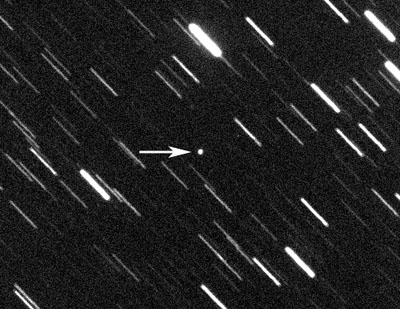
Gianluca Masi
162082 (1998 HL1), a potentially hazardous asteroid (PHA) nearly twice as wide as the Empire State Building is tall, will swing just 16.2 lunar distances from Earth around 17:00 UT on Friday, October 25th. While a "potentially hazardous" designation means that the asteroid's orbit can cross Earth's, there's no need to bite your fingernails this time around, as the object will miss Earth by a good 6.2 million kilometers (4 million miles).
Discovered by the Lincoln Near-Earth Asteroid Research (LINEAR) project at Socorro, New Mexico, on April 18, 1998, 1998 HL1 is an Apollo-type asteroid estimated to be between 440 and 990 meters across. This particular flyby is one of its best and brightest — the asteroid won't get any closer until a similar rendezvous in October 2140.
Unlike smaller, closer-approaching PHAs, 162082's appearance will not be a one-and-done with a rapid brightening followed by a precipitous fading. The object manages a respectable 13.1 magnitude on the evening of Thursday, October 24th, and will brighten to 12.3-12.5 by Saturday the 26th before fading back to 13.1 on October 28th. Ardent asteroid chasers can stick with 1998 HL1 through Halloween if they so desire, when it dims to magnitude 14.0.
In a hurry! Potentially hazardous asteroid 162082 (1998 HL1) on October 19, 2019
As the speedy traveler arcs southward from Triangulum to Cetus under a moonless sky in the coming nights, you'll need at least a 6-inch (150-mm) telescope and dark skies to track it. If your skies aren't so dark, an 8-inch (200-mm) should do the trick. Along the way, 1998 HL1 passes near several familiar sky-marks including including the Pinwheel Galaxy (M33), Alpha (α) Trianguli, and well-known long-period variable, Mira, which now gleams at magnitude 2.7.
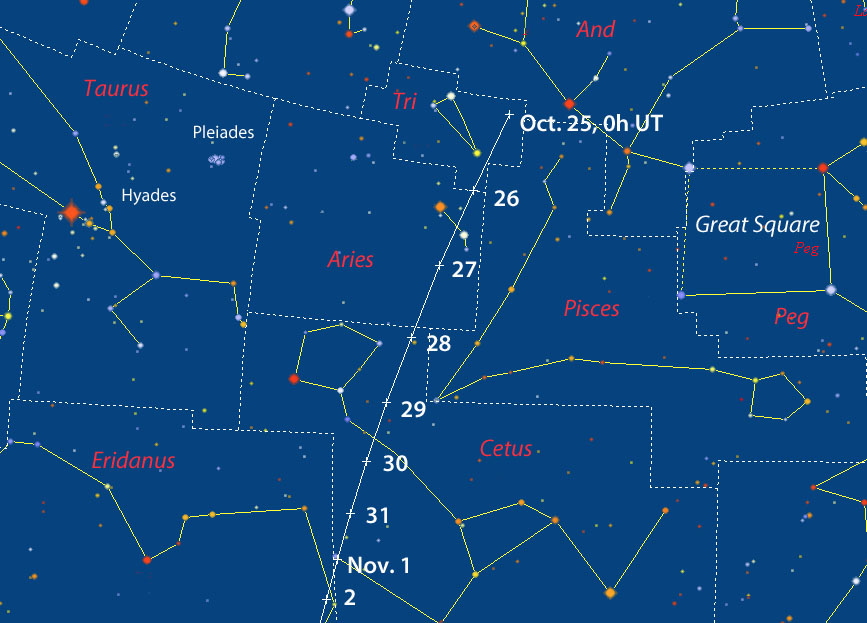
Chris Marriott's SkyMap
Don't have a telescope? Italian astronomer Gianluca Masi will livestream the asteroid's appearance on his Virtual Telescope Project website starting October 25th at 17:00 UT (1 p.m. EDT). On that night, 1998 HL1 will track fastest across the sky, skipping along at some 20 arcminutes per hour, or 20 arcseconds per minute. That's speedy enough that you'll see movement in a matter of seconds when the object passes near a field star. If you're watching in your own telescope, you can use higher magnifications to "increase" its velocity.
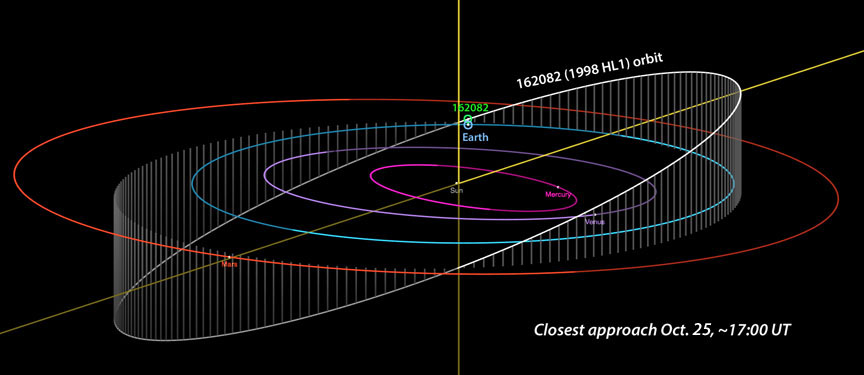
JPL / Horizons
I've included several charts to help you find and track the asteroid. Parallax, the apparent shift in the position of a nearby object against the sky background depending on an observer's location, will alter the asteroid's position by up to several arcminutes as it's viewed from one extreme of the globe to the other. But because the charts (below) are for mid-northern latitudes, the shift will be small.
To find 1998 HL1, locate a bright telescopic star or star configuration that the asteroid will pass close to. Then watch and wait for the asteroid to enter the field of view. Again, because of parallax, the asteroid may lie a short distance east or west of the path or arrive slightly earlier or later than the times shown.
(Chart update 10/26: I used the maps to find the asteroid on Oct. 26.1 UT and discovered that at least from my location at 47° north latitude the path had shifted about 2′ to the east from that shown. This is not unusual, however the asteroid appeared along that track nearly 20 minutes ahead of the times shown. Please factor that in when seeking the object. Magnitude was dead-on and it was easy to see motion in about 20-30 seconds.)
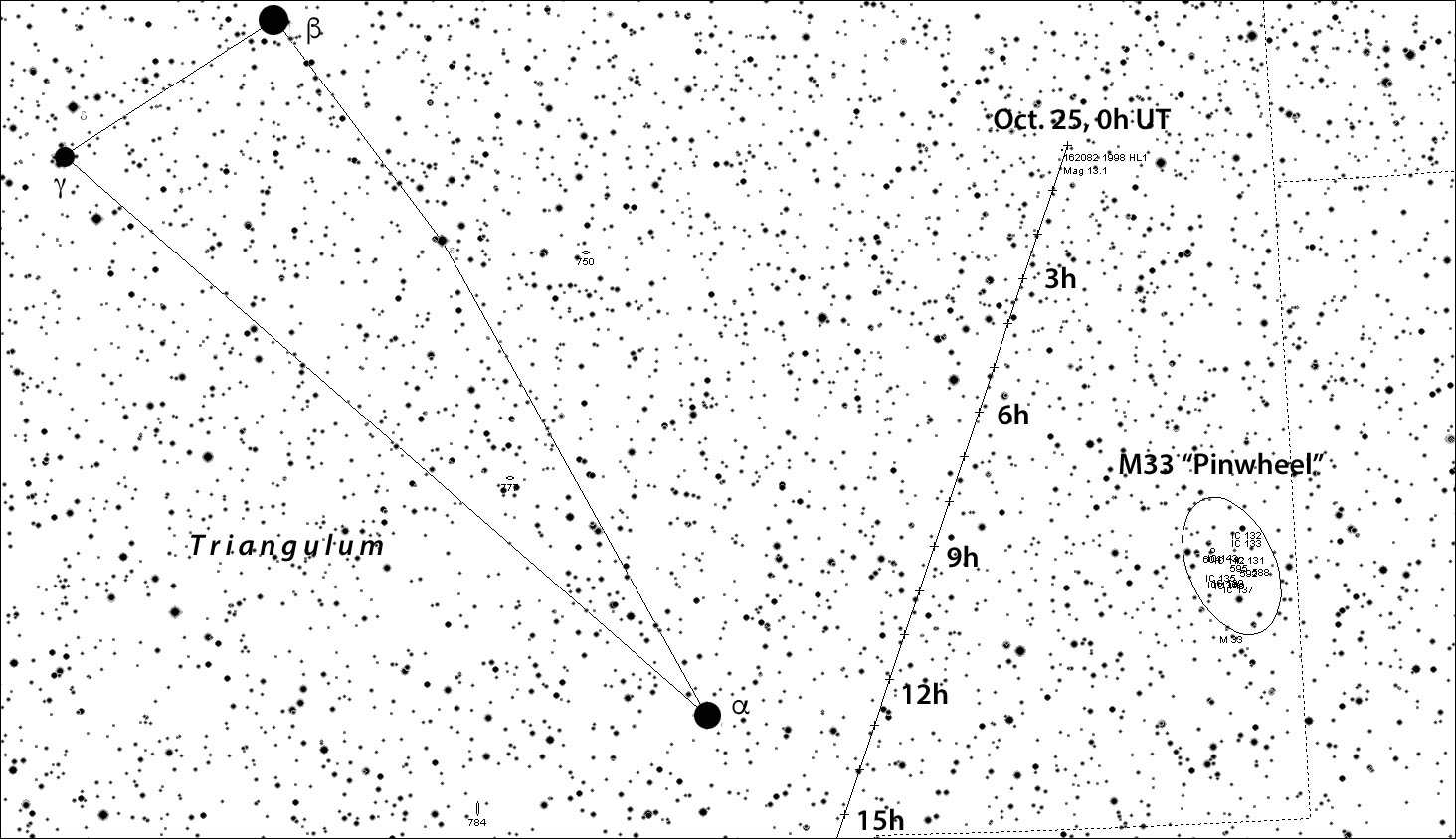
Chris Marriott's SkyMap, with additions by the author
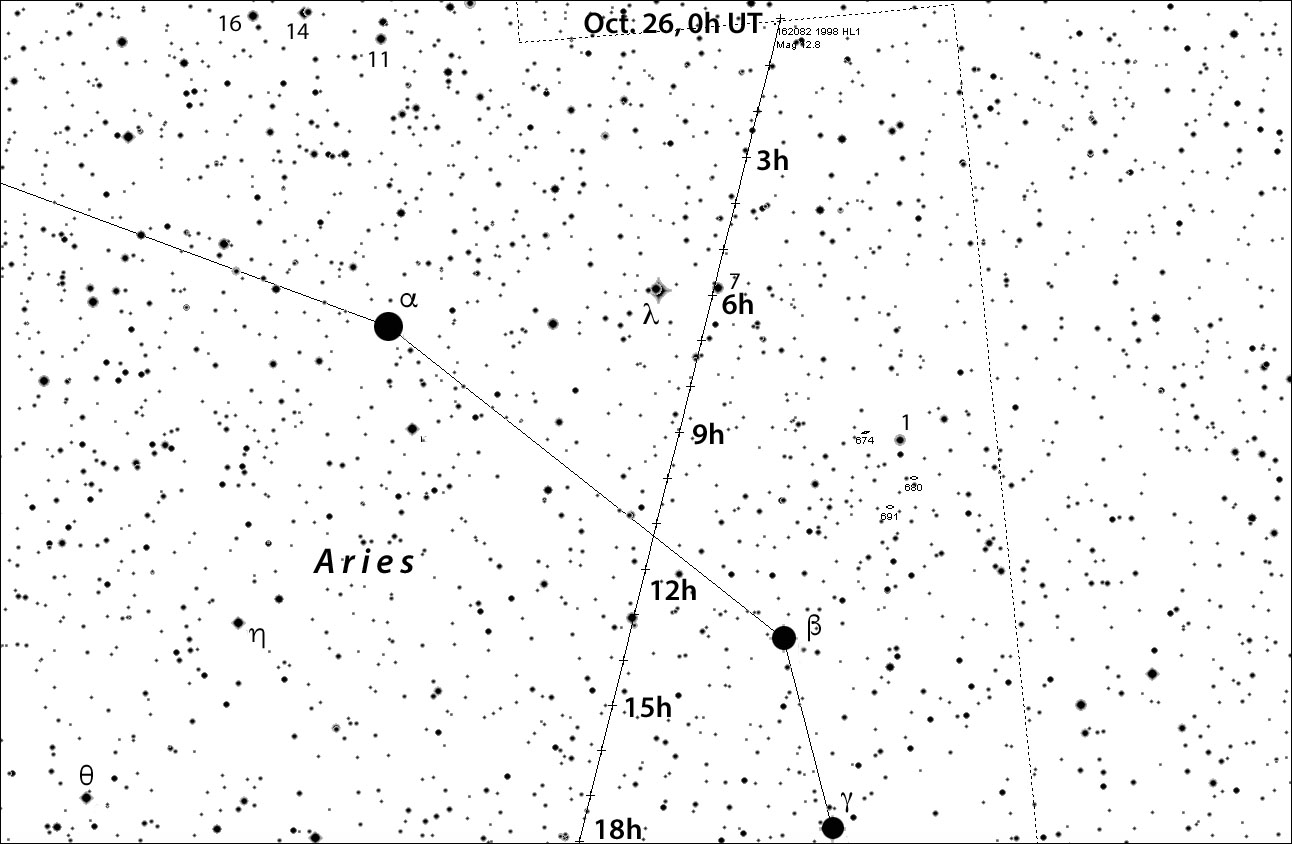
Chris Marriott's SkyMap
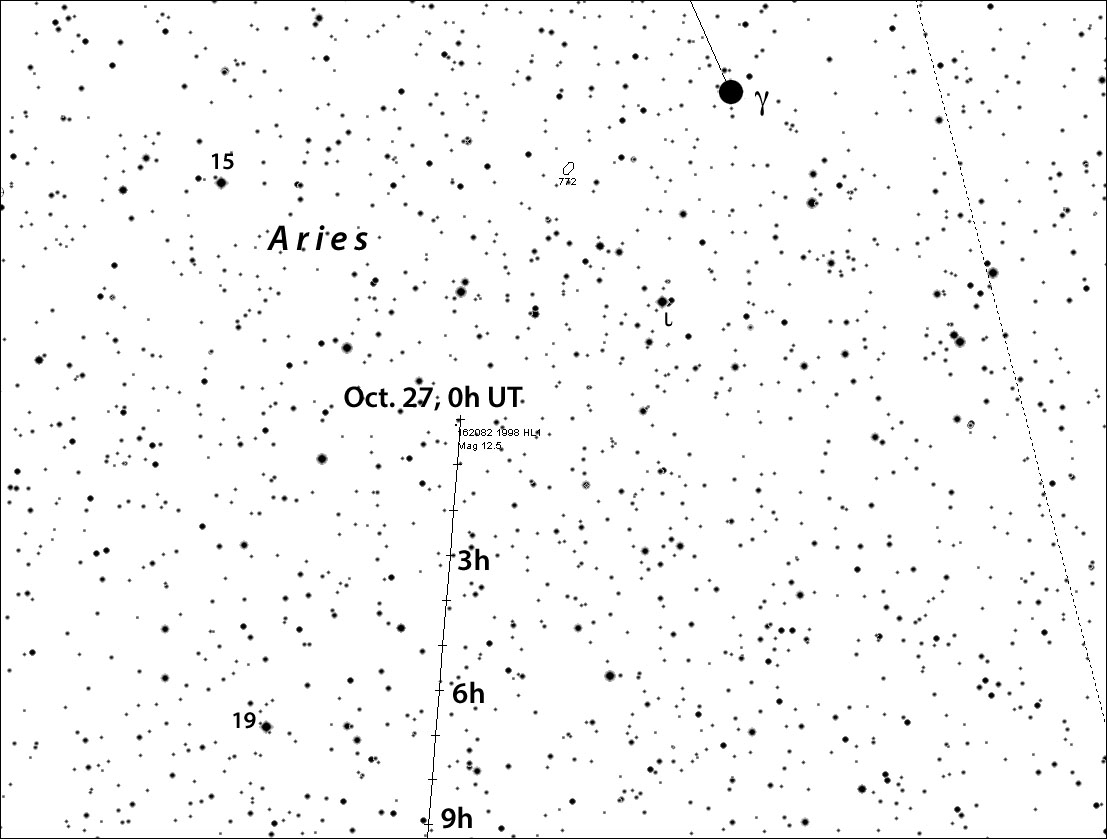
Chris Marriott's SkyMap
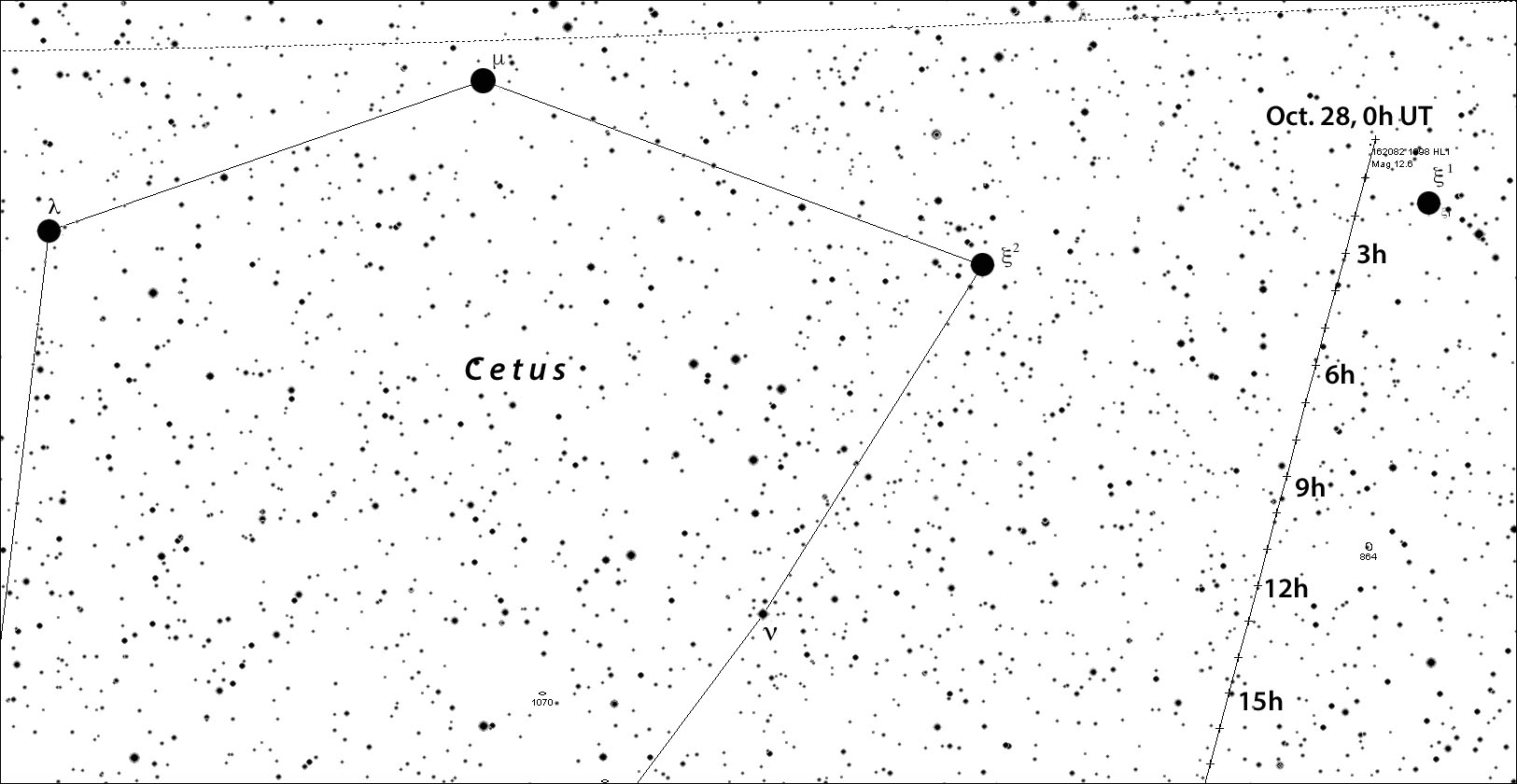
Chris Marriott's SkyMap
Want to make your own customized maps? Here are two easy ways:
1. If you already have a program like Starry Night, Megastar, etc. that can plot an asteroid path, just go to the Minor Planet and Comet Ephemeris Service, type 1998 HL1 or 162082 in the open box, then enter your latitude and longitude below that. Scroll to the end of the page, select your software, and click on the Generate ephemerides/HTML button. Save the file that pops up on your screen into your program, open the program, select the asteroid, and create a custom map with time intervals and a magnitude range to your liking.
2. Download the free home planetarium software Stellarium for Windows or Mac. Once you've chosen your city, click on the configuration icon (lower left side of screen), select Plugins, scroll, and select Solar System Editor. Click Configure and select the Solar System tab. Select Import orbital elements in MPC format, then Asteroids. Under Select bookmark, choose the PHA option and click Get orbital elements. Scroll through the list and find 1998 HL1, then click Add to list (or Add objects, depending on your version of Stellarium). Close the dialog boxes, choose a time you want to view the asteroid, and click Search window (magnifying glass in lower-left corner of screen). Type in the name 1998 HL1 and the program will take you straight to it. I know — it sounds like a lot of steps, but it's painless. And accurate.
 5
5









Comments
Rod
October 25, 2019 at 10:58 am
Bob, very good report and charts. I did not see the asteroid passing in Triangulum but was out last night with clear skies near 2200 EDT using my 10-inch viewing M33 and M31 in Andromeda. Very good views, this morning here clouds and rain on the way (again) 🙂
You must be logged in to post a comment.
Bob KingPost Author
October 26, 2019 at 10:12 am
Hi Rod,
Thank you! I used the charts to spot the asteroid last night and discovered that it arrived somewhat earlier than the times shown. If you plan to hunt for it please see my
"Chart update" note I included in the article this morning.
You must be logged in to post a comment.
Tom-Reiland
October 28, 2019 at 12:29 am
I finally got a night that was clear enough to try to locate 1998 HL1. I was having trouble with it when I decided to check your page on the computer at Wagman Observatory. I saw your update and went back to the 21" Reflector. I was able to spot the Asteroid without much trouble. I watched its movement for almost 20 minutes. Earlier, I found 21 Lutetia, also in Cetus. I used the chart from Heavens-Above. They produce some excellent charts for Asteroids and Comets. Their satellite predictions sometimes leave a lot to be desired. Thanks again for another interesting and informative post. I had hoped to locate 97 Klotho, but the humidity was increasing and clouds were forming, so I decided to close up rather than have moisture on the optics.
You must be logged in to post a comment.
Mike G
October 29, 2019 at 3:12 pm
Successfully observed Oct 28 ~3:00 UT. With elements imported from the PHA list as in the article, Stellarium shows 1998 HL1 offset as in your 10/26 update. Imported from the NEA list instead, Stellarium shows it much closer to the observed position. The two MPCORB files appear to have elements for different epochs.
You must be logged in to post a comment.
Bob KingPost Author
October 30, 2019 at 3:37 pm
Hi Mike,
Excellent tip — thank you!
You must be logged in to post a comment.
You must be logged in to post a comment.